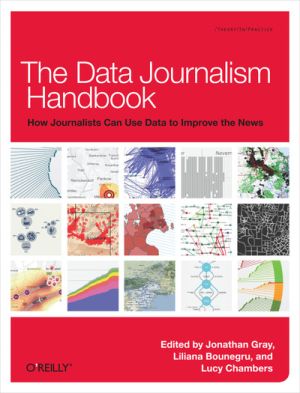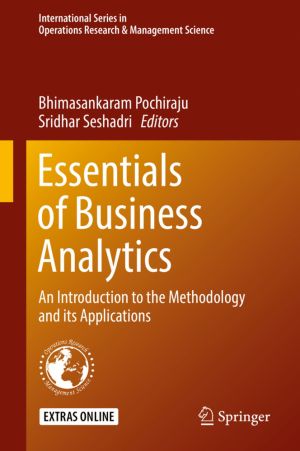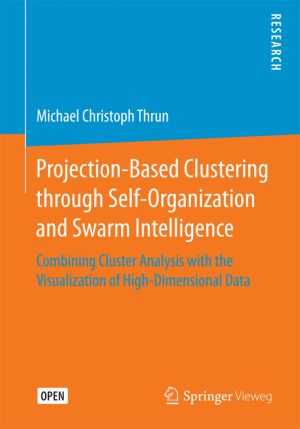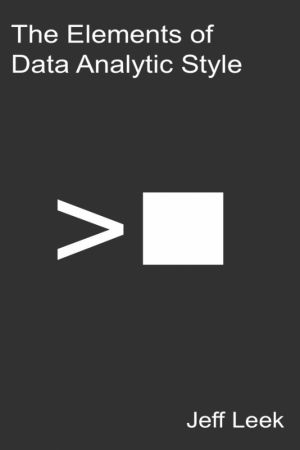The Elements of Data Analytic Style
A guide for people who want to analyze data
by Jeff Leek
DescriptionTable of ContentsDetailsHashtagsReport an issue
The book includes a basic checklist that may be useful as a guide for beginning data analysts or as a rubric for evaluating data analyses. It has been used in the author's data analysis class to evaluate student projects. Both the checklist and this book cover a small fraction of the field of data analysis, but the experience of the author is that once these elements are mastered, data analysts benefit most from hands on experience in their own discipline of application, and that many principles may be non-transferable beyond the basics. 






Book Description
The dramatic change in the price and accessibility of data demands a new focus on data analytic literacy. This book is intended for use by people who perform regular data analyses. It aims to give a brief summary of the key ideas, practices, and pitfalls of modern data analysis. One goal is to summarize in a succinct way the most common difficulties encountered by practicing data analysts. It may serve as a guide for peer reviewers who may refer to specific section numbers when evaluating manuscripts. As will become apparent, it is modeled loosely in format and aim on the Elements of Style by William Strunk.The book includes a basic checklist that may be useful as a guide for beginning data analysts or as a rubric for evaluating data analyses. It has been used in the author's data analysis class to evaluate student projects. Both the checklist and this book cover a small fraction of the field of data analysis, but the experience of the author is that once these elements are mastered, data analysts benefit most from hands on experience in their own discipline of application, and that many principles may be non-transferable beyond the basics.
This open book is licensed under a Creative Commons License (CC BY). You can download The Elements of Data Analytic Style ebook for free in PDF format (1.8 MB).
Table of Contents
Chapter 1
Introduction
Chapter 2
The data analytic question
Chapter 3
Tidying the data
Chapter 4
Checking the data
Chapter 5
Exploratory analysis
Chapter 6
Statistical modeling and inference
Chapter 7
Prediction and machine learning
Chapter 8
Causality
Chapter 9
Written analyses
Chapter 10
Creating figures
Chapter 11
Presenting data
Chapter 12
Reproducibility
Chapter 13
A few matters of form
Chapter 14
The data analysis checklist
Chapter 15
Additional resources
Book Details
Title
The Elements of Data Analytic Style
Subject
Computer Science
Publisher
Leanpub
Published
2015
Pages
98
Edition
1
Language
English
PDF Size
1.8 MB
License

Related Books

When you combine the sheer scale and range of digital information now available with a journalist's "nose for news" and her ability to tell a compelling story, a new world of possibility opens up. With The Data Journalism Handbook, you'll explore the potential, limits, and applied uses of this new and fascinating field.
This ...

David Harvey's The Condition of Postmodernity rationalised capitalism's transformation during an extraordinary year: 1989. It gave theoretical expression to a material and cultural reality that was just then getting properly started - globalisation and postmodernity - whilst highlighting the geo-spatial limits to accumulation imposed by o...

Books about Oxford have generally focused on the University rather than the city. This original book on the local politics of Oxford City from 1830 to 1980 is based on a comprehensive analysis of primary sources and tells the story of the city's progressive politics. The book traces this history from Chartism and electoral reform in the mid-ni...

Database Design, 2nd Edition covers database systems and database design concepts. New to this edition are SQL info, additional examples, key terms and review exercises at the end of each chapter.
Topics include:The history of databases; Characteristics and benefits of databases; Data models; Data modelling; Classification of database management...

This comprehensive edited volume is the first of its kind, designed to serve as a textbook for long-duration business analytics programs. It can also be used as a guide to the field by practitioners. The book has contributions from experts in top universities and industry. The editors have taken extreme care to ensure continuity across the chapters...

It covers aspects of unsupervised machine learning used for knowledge discovery in data science and introduces a data-driven approach to cluster analysis, the Databionic swarm(DBS). DBS consists of the 3D landscape visualization and clustering of data. The 3D landscape enables 3D printing of high-dimensional data structures.The clustering and numbe...

